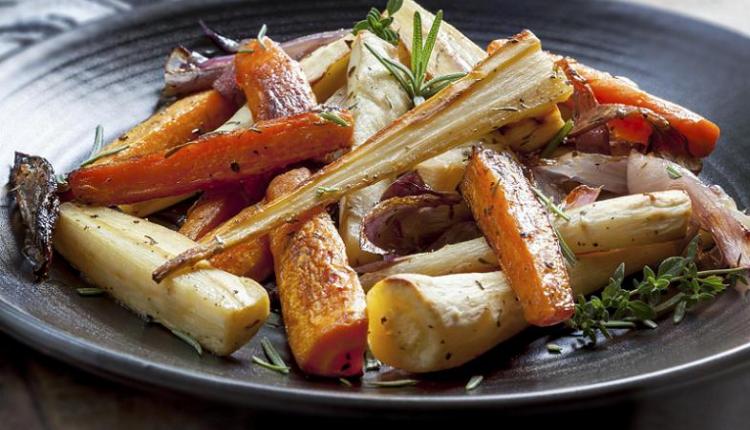What to Eat in Winter
Delicious, nutritious produce to enjoy when it’s cold

It’s easy to eat lots of fresh fruits and vegetables in the summer. Freshly harvested local produce is tastier and more nutritious than stuff that’s been trucked cross country, and in-season produce is less expensive. When it’s winter, you have options beyond pale, cottony, bland tomatoes or peaches from who knows where. Give these fruits and vegetables a place in your market basket:
COOKING GREENS
Some greens need to be cooked for best flavor and nutrition, and many of these are at their best in winter (frost makes them sweeter and more tender). Kale, chard, bok choi, and collards are grown for their leaves. Turnips and beets are grown for their roots and their leaves. Look for these foods with leaves attached and take them off when you get home.
Kale, Brussels sprouts, cauliflower, and broccoli are members of the cabbage family. They are high in sulfur compounds that provide many health benefits. These compounds smell bad when the vegetables are overcooked, especially if you boil them. Try roasting them instead. Some of them are also high in nutrients you might not expect. One cup of cooked collard greens, for example, provides almost as much calcium as a cup of chocolate milk!
CITRUS
Most citrus fruits are available year round. Clementines, tangerines, and blood oranges are usually in markets from December through March. Even the more common ones are at their peak in the winter.
Citrus fruits are famous for their sky-high vitamin C content. They also supply folate, fiber, and nutrients that come from different pigments. Blood oranges and pink and red grapefruit, for example, are high in lycopene. This is a pigment that may help protect against some types of cancer.
ROOT VEGETABLES
Plants store energy and nutrients in their roots to help them grow. Root vegetables like potatoes, carrots, beets, and parsnips, are often high in carbohydrates and other nutrients.
Most root vegetables have thick cell walls. Cooking breaks these walls down and make it easier for the nutrients inside to get to our bodies. Roasting these vegetables is a way to make the most of their natural sweetness.
ONIONS AND GARLIC
Vegetables in the allium family (garlic, leeks, scallions, shallots, and onions) almost never appear on “best sources of” lists for vitamins or minerals, but that’s okay. They’re high in flavor compounds that can provide health benefits. Garlic alone contains more than 100 of these compounds! Allicin is one. It develops when it is exposed to oxygen. Heating garlic right after chopping it keeps the allicin from forming. If possible, chop or crush garlic about 10 minutes before you cook it.
Many of the compounds in these vegetables make your eyes burn and your hands smell. Peel onions under running water to avoid tears. To get the smell off your hands, rub your hands on stainless steel as you wash them (either a sink, or a utensil like a pot or spoon).


